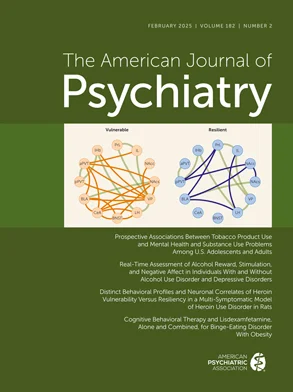The antidepressant effect has been thought to reflect ketamine’s glutamatergic properties, specifically its blocking of
N-methyl-
d-aspartic acid (NMDA) receptors, which should be a clue for follow-up therapy. However, other currently available agents (covering a variety of glutamatergic actions) have proven unsuccessful in antidepressant trials either as monotherapy or in combination with ketamine (
5–
7). Investigational agents have been mixed in their effects, with glycine partial or full agonists that act essentially as NMDA agonists also being effective for depression (unpublished 2012 report by R.M. Burch;
8,
9). This suggests that NMDA antagonism may not be the primary mechanism of action for ketamine in major depression. Recent reports have indicated that ketamine has effects on intracelluar mTor that could account for its antidepressant properties (
10).
Stimulants and opiates have long been associated with short-term, although generally clinically ineffective, therapeutic effects and problems with abuse. Ketamine has both opiate and stimulant effects (
11,
12). It is a strong promoter of catecholamine, particularly dopamine, turnover (
12), and its monoaminergic properties are similar to cocaine or amphetamine. Ketamine also has mu opioid receptor properties, consistent with its use for anesthesia and treatment of pain. This mechanism may be similar to the antidepressant effects of buprenorphine (
13), although a study in healthy individuals did indicate that the effects of ketamine on responses to alcohol were not blocked by the mu antagonist naltrexone (
14). To our knowledge, such a study has not been conducted in depressed patients. It is interesting that Rodriguez et al. (
15) recently reported that ketamine given intravenously was similarly effective in refractory obsessive-compulsive disorder (OCD). This was reminiscent of a double-blind, placebo-controlled study by Koran et al. (
16) a few years ago that reported that oral morphine improved OCD symptoms 1 day after administration—an effect that lasted 5 days. Comparison studies against stimulants and opioids would be helpful for assessing ketamine’s mechanism of action for acutely elevating mood and its potential for providing overall benefit in the treatment of depression.

